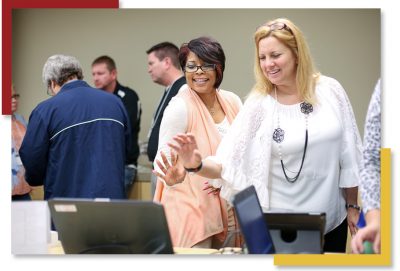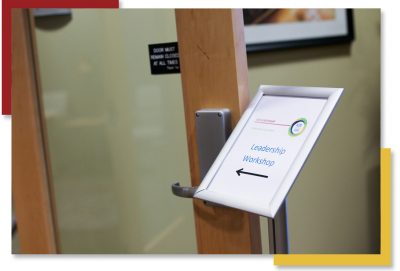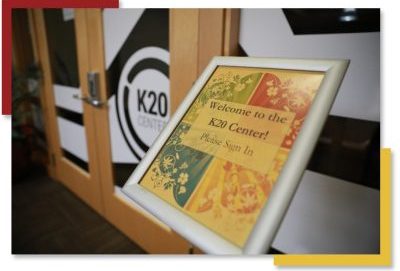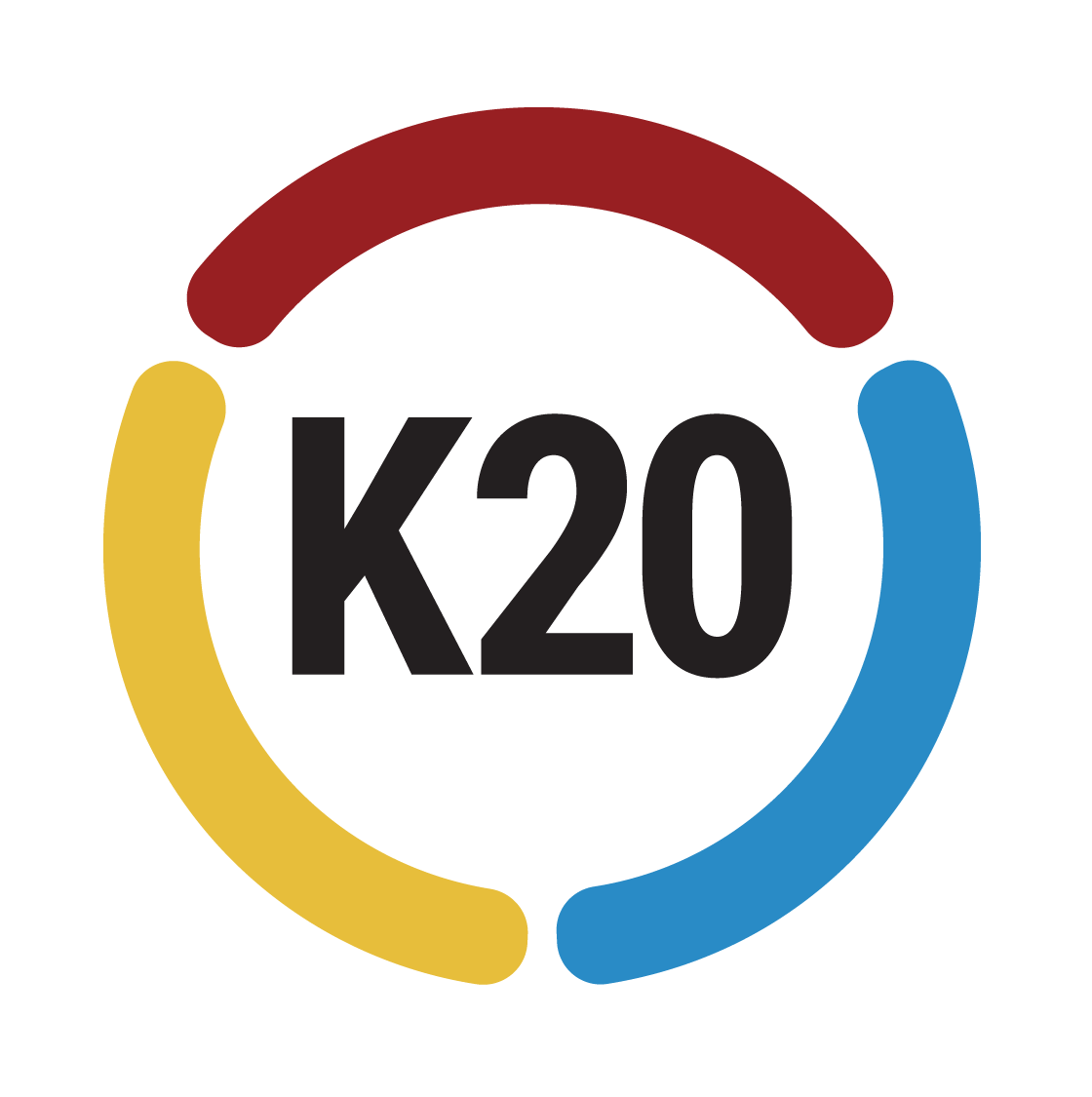Foundational Concepts
Inquiry-Based Learning
Inquiry-based learning describes an environment where learning is driven by an inquiry process directed by the learner. Inquiry-based learning begins with a scenario or problem, and through the guidance of a facilitator, each learner generates unique issues and questions to explore the topic. Learners then independently determine the resources needed to research their chosen topic. Knowledge gained through an inquiry-based approach is more easily retained. Better retention of knowledge is acquired through direct experience and relationships to real-world problems.


The inquiry-based learning approach includes problem-based learning, project-based learning, and design-based learning. Inquiry-based learning moves students beyond holding and finding factual information to applying new knowledge in novel and unique ways (Coffman, 2009). Accordingly, research shows that inquiry-based learning provides a significant, positive learning impact on process-based outcomes (e.g., tasks involving critical thinking and problem-solving) as well as content-based outcomes (e.g., tasks involving memorization and conceptual knowledge) (Hattie, 2008). Therefore, inquiry-based learning is a well-suited approach for outcomes related to critical thinking, self-directed learning, problem-solving, 21st-century skills, scaffolding, metacognition, and collaborative learning.
Inquiry-Based Learning
Inquiry-based learning describes an environment where learning is driven by an inquiry process directed by the learner. Inquiry-based learning begins with a scenario or problem, and through the guidance of a facilitator, each learner generates unique issues and questions to explore the topic. Learners then independently determine the resources needed to research their chosen topic. Knowledge gained through an inquiry-based approach is more easily retained. Better retention of knowledge is acquired through direct experience and relationships to real-world problems.

The inquiry-based learning approach includes problem-based learning, project-based learning, and design-based learning. Inquiry-based learning moves students beyond holding and finding factual information to applying new knowledge in novel and unique ways (Coffman, 2009). Accordingly, research shows that inquiry-based learning provides a significant, positive learning impact on process-based outcomes (e.g., tasks involving critical thinking and problem-solving) as well as content-based outcomes (e.g., tasks involving memorization and conceptual knowledge) (Hattie, 2008). Therefore, inquiry-based learning is a well-suited approach for outcomes related to critical thinking, self-directed learning, problem-solving, 21st-century skills, scaffolding, metacognition, and collaborative learning.

Authenticity
Authenticity is a conceptual framework for meaningful learner-centered learning. Individuals build on what they already know to create deep knowledge (Bransford, Brown, & Cocking, 2000). The characteristics of authentic intellectual work include “construction of knowledge, through the use of disciplined inquiry, to produce discourse, products, or performances that have value beyond school” (Newmann, Bryk, & Nagaoka, 2001, p. 14). A body of research spanning more than two decades points to the efficacy of authentic learning environments.


Newmann and subsequent researchers found that when fidelity to authentic pedagogy is at a high level in the learning environment, learner achievement is higher as well, regardless of ethnicity, socio-economic status, or identified disabilities (King, Schroeder, & Chawszczweski, 2001; Kukrai & Spector, 2012; Newmann et al., 2001; Newmann, King, & Carmichael, 2007; Newmann, Marks, & Gamoran, 1996; Saye, 2013; Wirkala & Kuhn, 2011). Uholding the components of Authenticity is an important part of a K20 learning experience and always a part of the collaborative conversation between K20 Curriculum Specialists, Professional Development Coordinators, and Instructional Designers.
Authenticity
Authenticity is a conceptual framework for meaningful learner-centered learning. Individuals build on what they already know to create deep knowledge (Bransford, Brown, & Cocking, 2000). The characteristics of authentic intellectual work include “construction of knowledge, through the use of disciplined inquiry, to produce discourse, products, or performances that have value beyond school” (Newmann, Bryk, & Nagaoka, 2001, p. 14). A body of research spanning more than two decades points to the efficacy of authentic learning environments.

Newmann and subsequent researchers found that when fidelity to authentic pedagogy is at a high level in the learning environment, learner achievement is higher as well, regardless of ethnicity, socio-economic status, or identified disabilities (King, Schroeder, & Chawszczweski, 2001; Kukrai & Spector, 2012; Newmann et al., 2001; Newmann, King, & Carmichael, 2007; Newmann, Marks, & Gamoran, 1996; Saye, 2013; Wirkala & Kuhn, 2011). Uholding the components of Authenticity is an important part of a K20 learning experience and always a part of the collaborative conversation between K20 Curriculum Specialists, Professional Development Coordinators, and Instructional Designers.
The 5E Model
The 5E lesson format is a process to deepen learner understanding of a concept through activities that engage, explore, explain, extend/elaborate, and evaluate. The traditional roles of the teacher and the learner are reversed in this model. Learners take on much of the responsibility for learning as they construct knowledge through discovery, while in traditional lesson models, the teacher is responsible for dispensing information to be learned or retained by the learners (Morgan & Ansberry, 2013). Developed by the Biological Sciences Curriculum Study (BSCS), the 5E model asks the learner, with their preconceived ideas of how the world works, to test those ideas against new concepts and information that may or may not support their original view.

In the 5E model, the teacher acts as a guide: raising questions, providing opportunities for exploration, asking for evidence to support learner explanations, [. . .] correcting misconceptions, and coaching learners as they apply new concepts. This model differs greatly from the traditional format of lecturing, leading learners through a step-by-step sequence to a solution, providing definite answers, and testing isolated facts. (Morgan & Ansberry, 2013, p. 31)

The 5E format provides a planned sequence of instruction that places the learner at the center of their learning experience. The K20 Center has adopted this model as a guide in the planning of all the lessons we publish and it has permeated our thinking into other realms of learning, informing our activity sequences for professional development and online learning as well.
The 5E Model
The 5E lesson format is a process to deepen learner understanding of a concept through activities that engage, explore, explain, extend/elaborate, and evaluate. The traditional roles of the teacher and the learner are reversed in this model. Learners take on much of the responsibility for learning as they construct knowledge through discovery, while in traditional lesson models, the teacher is responsible for dispensing information to be learned or retained by the learners (Morgan & Ansberry, 2013). Developed by the Biological Sciences Curriculum Study (BSCS), the 5E model asks the learner, with their preconceived ideas of how the world works, to test those ideas against new concepts and information that may or may not support their original view.

In the 5E model, the teacher acts as a guide: raising questions, providing opportunities for exploration, asking for evidence to support learner explanations, [. . .] correcting misconceptions, and coaching learners as they apply new concepts. This model differs greatly from the traditional format of lecturing, leading learners through a step-by-step sequence to a solution, providing definite answers, and testing isolated facts. (Morgan & Ansberry, 2013, p. 31)
The 5E format provides a planned sequence of instruction that places the learner at the center of their learning experience. The K20 Center has adopted this model as a guide in the planning of all the lessons we publish and it has permeated our thinking into other realms of learning, informing our activity sequences for professional development and online learning as well.





